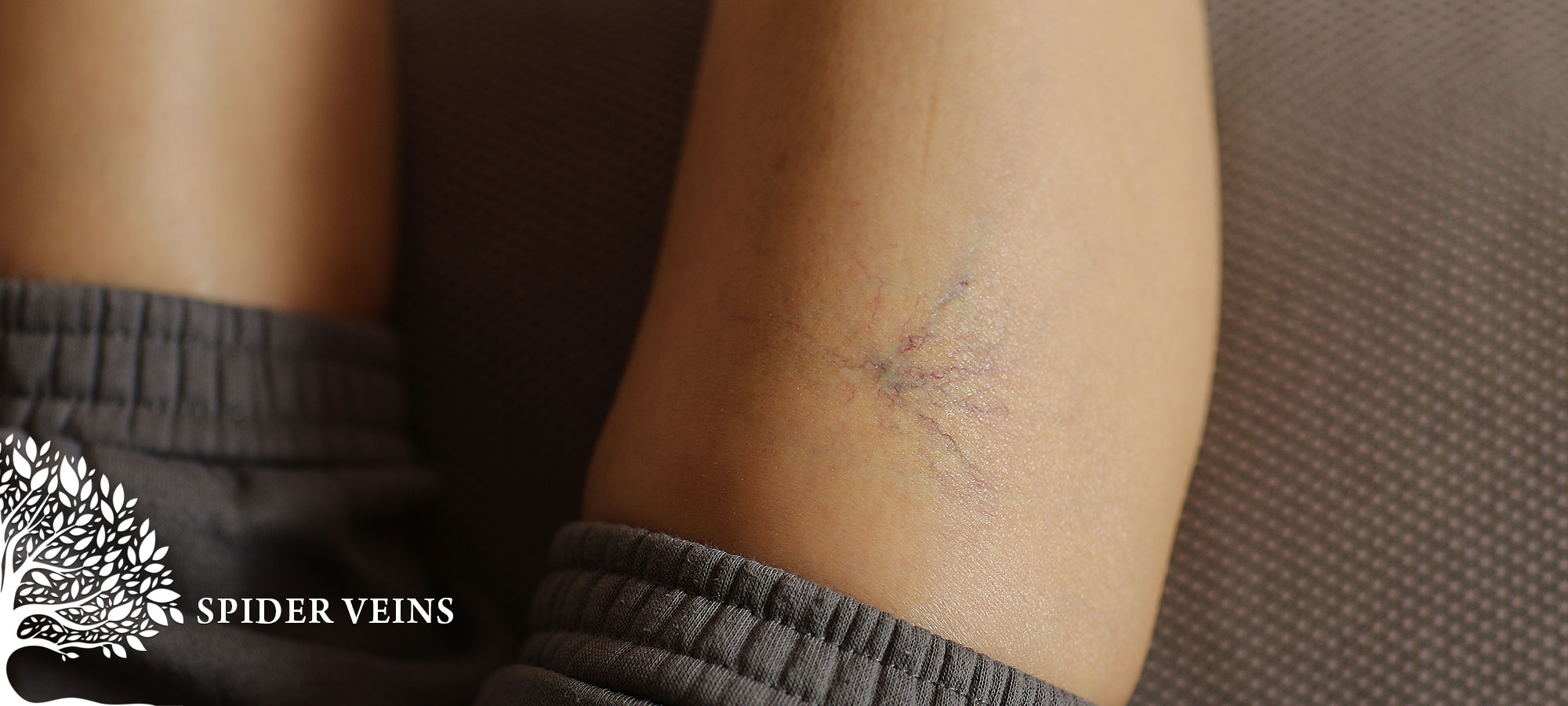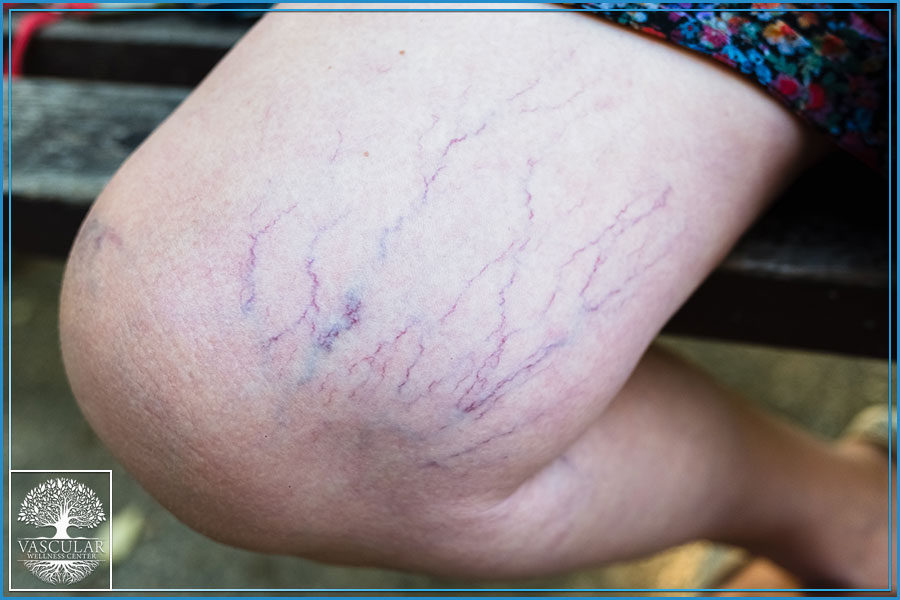
Spider Veins
Spider veins are small, visible veins lying just beneath the skin’s surface, often appearing as thin, branching or web-like lines. They may be blue, purple, or red and typically occur on the legs, ankles, feet, face, or pelvic area. Generally, they do not cause symptoms, but in rare instances, standing for extended periods can lead to mild discomfort.
Making certain lifestyle changes—such as maintaining a healthy weight, staying active, elevating your feet when you’re seated or lying down, and wearing compression stockings—can help prevent or minimize spider veins.
Progression & Prognosis
In the early stages, spider veins might appear in small clusters that are relatively unobtrusive. Over time, they may grow in both number and size, becoming more pronounced. Initially, individuals usually notice few issues besides their appearance; however, as spider veins progress, some may experience aches, itching, or burning sensations, especially after prolonged sitting or standing.
Although spider veins are generally harmless, many people seek treatment to address cosmetic concerns or alleviate discomfort. Available treatments include sclerotherapy, laser therapy, and vein striping, all of which aim to close off or remove the affected veins.

Risk Factors & Symptoms of Spider Veins
Risk Factors
Contributing factors like aging, pregnancy, prolonged sitting or standing, obesity, and excessive sun exposure can accelerate the development of spider veins. They may persist or reoccur, emphasizing the importance of prevention. Strategies include maintaining a healthy weight, regular exercise, avoiding lengthy periods of inactivity, and wearing compression stockings when necessary. Early intervention and lifestyle adjustments can help effectively manage the progression of spider veins.
Symptoms:
- Redness in the legs
- Visible clusters of veins
- Aching or throbbing, particularly after standing for long stretches
- Swelling in the legs, ankles, or feet
- Restless leg syndrome
- Fatigue or heaviness in the legs
- Tenderness in the affected area
- Increased tendency to bruise or bleed
Treatments for Spider Veins
Sclerotherapy
A minimally invasive procedure involving the injection of a sclerosing solution into the affected vein, prompting it to scar and collapse. Blood flow is then diverted to healthier veins, causing the treated vein to fade over time. Recovery is typically brief.
High Ligation
This surgical procedure entails tying off a compromised vein to redirect blood flow. Vein stripping—the removal of the damaged vein—may also be performed in cases of advanced venous disease. Completed as an outpatient procedure at a regional hospital, it requires general anesthesia. While less common than other minimally invasive therapies, it offers a high success rate for certain patients.
Other Treatments Include
- Compression Stockings
- Phlebotomy
